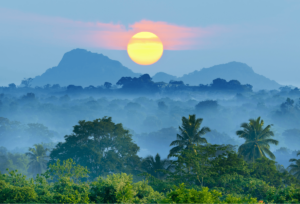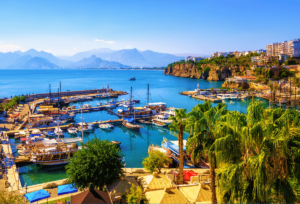The Canary Islands’ hidden gem, La Palma, is a world away from the hustle of the neighbouring Tenerife and Gran Canaria. With spectacular volcanic scenery, banana plantations, black-sand beaches and even an enchanting forest in the North East, there’s something very mystical about this small island. No wonder it’s referred to as La Isla Bonita, or the Beautiful Island.
People are drawn to La Palma to soak up the tranquil atmosphere and enjoy the hiking opportunities as well as the quaint 16th Century centre of Santa Cruz, but it’s La Palma’s astronomical opportunities that are truly mind-blowing. Here are 10 reasons that you should visit La Palma for stargazing (although there are many more)!
1. No better place on earth
The Canary Islands are recognised on an international level for their exceptional conditions for stargazing. La Palma was the first place in the world to be named a Starlight Reserve and has astral viewing points dotted all around the island.
2. Observe and learn
The island has two Instituto de Astrofísica de Canarias (IAC) international astronomy observatories. At the Astro La Palma Observatory at Brena Bajao, you will be driven 4,000 feet up the mountain (weather-dependent) to gain an unbeatable view of the Milky Way or gaze through a telescope at the surface of the moon, rings of Saturn and moons of Jupiter. Just remember to take some warm clothes! You can stay at the nearby resort of Los Cancajos. Tours can be arranged with Astrotour or AstroCamp, from around €25/£20.
3. Astrofest September to October 2015
If you are planning a trip between 25th September and 9th October you can visit Astrofest La Palma 2015. Its programme includes an All Night Lunar Eclipse event from 9pm on 27th September to around 9am the following morning, where you can walk under the moonlight overlooking the Caldera de Taburiente with photo opportunities for the eclipse, and a Photography Day Trip around the north of the island on 2nd October, including a visit to the Observatory Roque de Los Muchachos and several stops to enjoy the island and take photos.
4. Light reading
Gen up on the plane before you even get there by reading A Breathtaking Window on the Universe by Sheila Crosby — a great introduction to the Roque de los Muchachos observatory and stargazing in La Palma in general.
5. Sun-scaping
Visit the San Antonio volcano visitor centre to find out about the movement and the setting of the sun with the help of some markers which show the changes of the seasons.
6. Easily accessible
San Bartolo Mountain in the east of La Palma is easy to get to by car, and is up a short hill near restaurants serving local food. It offers particularly good views in summer, including of one of the nearest blue and white stars to Earth —Vega.
7. An ocean view
The San Borondón viewpoint on the coast of Tazacorte takes full advantage of its beautiful natural terrace over the Atlantic Ocean from which you can see the North Star.
8. In a galaxy far, far away
Looking westwards, the Llano del Jable astronomic viewpoint is the ideal place to view the constellations in January just after night fall. Here, even without binoculars, you can see one of the furthest celestial objects that are visible to the naked eye – the Great Andromeda Nebula.
9. There’s an app for that!
If you don’t have time for a guided tour or simply want to explore the night sky in your own time, you can download the Apple app Skyguide, which allows you to easily identify stars, planets and constellations by simply holding your device up to the sky. No Wi-Fi, GPS or data signal required!
10. Starlit dining
Why not simply enjoy a quality Spanish or Canarian meal, particularly its exquisite ocean cuisine, whilst sipping on some Teneguía wine sat out under the clear La Palma night sky.






